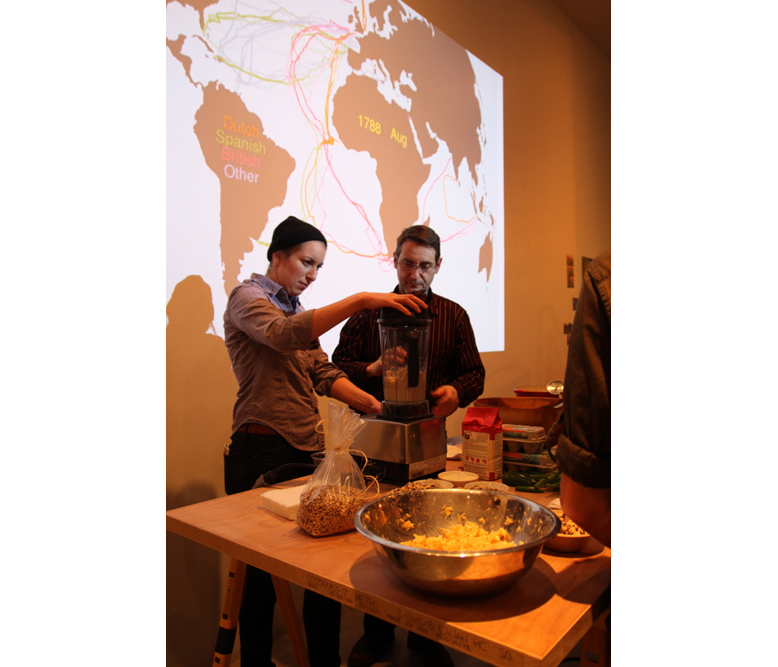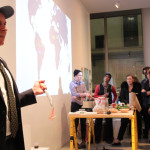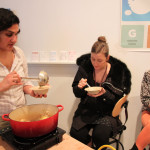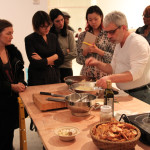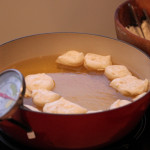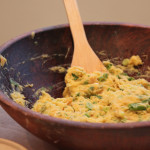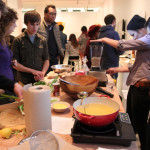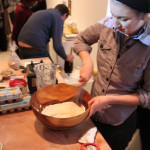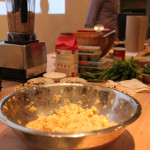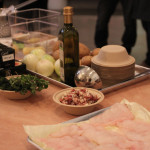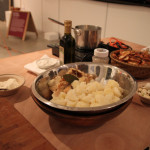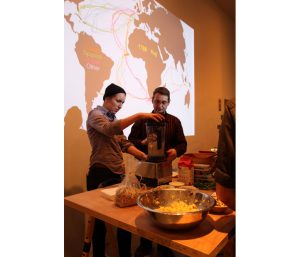Cod is a humble fish, gracing the table in simple dishes around the world. But despite its seeming ubiquity, there isn’t much cod left in the oceans. Last week we attended part of a 2-day workshop at the OPENrestaurant at Parsons The New School for Design dedicated entirely to tracing the history of the rise and decline of the cod.
In a nutshell, explorers from Southern Europe discovered waters teeming with cod right along with the Americas. They took it back to their homelands, where it was a popular protein, often filling in on meatless days in Catholic homes. And, as Robin Shulman, author of “Eat the City” (read an excerpt here in our magazine) explained, when sugar cane became a lucrative crop in the West Indies, Dutch plantation owners were unwilling to give up any land to feed the people working the cane fields and instead began transporting salted cod from New England down to the Caribbean isles to feed their slaves. The result? Under Dutch control, New York City became a wealthy sugar refining center and in all the lands touching the Atlantic, cod got incorporated into diets, making it a staple for a heck of a lot of people. Which meant overfishing to the point of nearly depleting the ocean’s supply of cod.
Sharing a bit of his fish expertise, Paul Greenberg, author of “Four Fish: The Future of the Last Wild Food,” explained how cod, unlike other fisheries which the government started to manage in the 1990s, has failed to recover. One problem, he said, is that for years we targeted the largest cod in the waters, leaving only small cod to multiply. These smaller cod, now up against an ocean of much larger fish, don’t survive long enough to get really big the way their ancestors did.
In order to appreciate how cod spread throughout the Western hemisphere, Jerome Waag–chef at Berkeley’s Chez Panisse–led us on a culinary tour around the world. We made three classic cod dishes. First, an Old World-style New England Fresh Cod Chowder, layered in a pot just like fishermen out on the sea would have done on their boats. Second, brandade de morue, the Provencal emulsion of salted cod, potatoes, cream, oil and herbs served on crusty bits of toast. And lastly, acra, the codfish fritters popular in the Caribbean. (As an aside, we also made akara, Nigerian fritters made of pureed–and hand peeled–black-eyed peas because we were curious about the linguistic root of the Caribbean acra.)
It was a strange night, dining on a fish we humans nearly wiped off the face of the earth. Truly delicious in every incarnation, it was easy to see how cod had become so popular. But every bite made us cringe a bit with guilt. If the goal of the workshop was awareness about the dangers of overconsumption, message received. Not sure I’ll be able to buy cod ever again.


